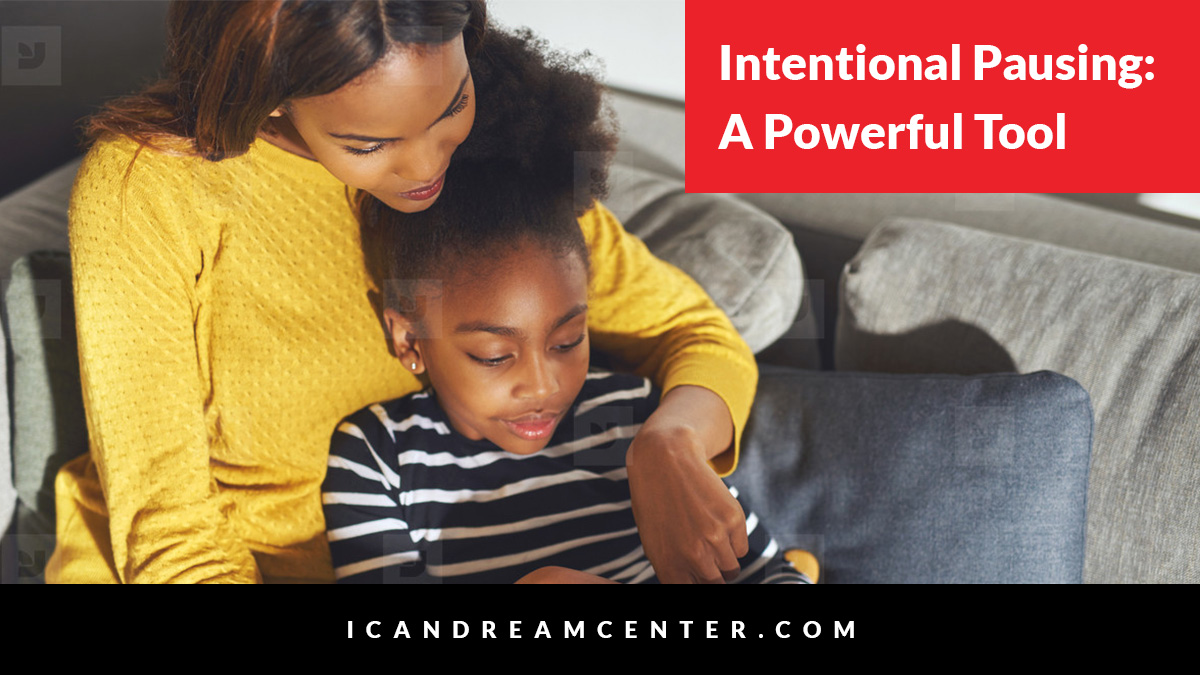
Intentional Pausing: A Powerful Tool
There are many reasons why pausing during a conversation can be useful. For example:
· We pause to highlight grammatical structures such as to mark the end of a sentence or to shift to a new idea.
· We pause for social reasons, such as to build anticipation, to clarify that we have expectations, to simply gather our thoughts, or to emphasize a point we’re trying to make.
· We pause to allow people to process what we’ve said.
Children are often processing multiple pieces of information (what they hear, what they see, what they’re touching, the way their bodies feel in motion) simultaneously. Pausing gives them a chance to process this information and come up with a response.
Pausing also gives you an opportunity to watch their facial expressions and body language: Does the child appear to be thinking and using their “inner voice?” Do they appear to be struggling and have no clue where to start? Or are they stalling and waiting for you to interject and say something?
In speech-language therapy, speech-language pathologists often use cloze statements to facilitate language and to offer a cue for learning of skills.
Cloze statements, also known as sentence completion tasks or cloze procedure, require the child to fill in the blank. To do this, say part of the sentence, phrase, or verse but intentionally delete a word by pausing and waiting expectantly. This entices the child to complete it with the correct one.
Nursery rhymes provide an excellent opportunity for this due to their repetition and rhythm. For example, you can sing to your child, “Twinkle, twinkle little…” and wait for them to finish the sentence.
Books that have lots of repetition, such as Dr. Suess, are also excellent. Sentence completion tasks during shared book reading is a fantastic way to increase your child’s language and participation.
